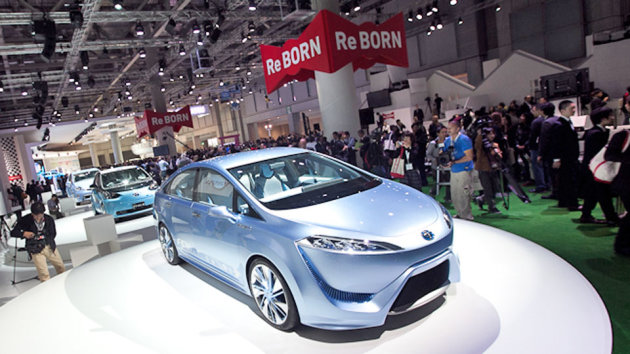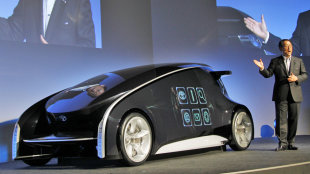For a declining industry with dim prospects for the future, Japanese automakers put on a surprisingly feisty display at this week’s Tokyo Motor Show, vowing to woo back and win fans with a renewed sense of what matters.
With domestic sales in a permanent slide and a culture that once revered cars now focused on mobile computing, Japanese automakers were troubled well before the earthquake and tsunami of last March devastated factories and the entire economy.
In the United States, Japanese automakers lost ground to Detroit and Korean players in mass-market cars, and don’t seem fully competitive for luxury buyers with aggressive European makes. Even among their flagship cars like the Nissan GT-R or Lexus LF-A, Japanese brands had struggled to nurture unique, intriguing designs, while several models, especially from Honda, stood out as blunders.
If there’s a turnaround on the horizon, this Tokyo show was the first glimpse. Still filled with the cute, gadgety concepts known to pop up at the biannual show, major Japanese makers also offered real models with a stronger mission and better design. Most were powered by electricity or some form of hybrid system, yet the most anticipated models — the Toyota GT 86 and Subaru BR-Z — were small sports cars powered only by pure gasoline, designed for the joy of driving.
Here’s a look at the most important unveilings and concepts:
With domestic sales in a permanent slide and a culture that once revered cars now focused on mobile computing, Japanese automakers were troubled well before the earthquake and tsunami of last March devastated factories and the entire economy.
In the United States, Japanese automakers lost ground to Detroit and Korean players in mass-market cars, and don’t seem fully competitive for luxury buyers with aggressive European makes. Even among their flagship cars like the Nissan GT-R or Lexus LF-A, Japanese brands had struggled to nurture unique, intriguing designs, while several models, especially from Honda, stood out as blunders.
If there’s a turnaround on the horizon, this Tokyo show was the first glimpse. Still filled with the cute, gadgety concepts known to pop up at the biannual show, major Japanese makers also offered real models with a stronger mission and better design. Most were powered by electricity or some form of hybrid system, yet the most anticipated models — the Toyota GT 86 and Subaru BR-Z — were small sports cars powered only by pure gasoline, designed for the joy of driving.
Here’s a look at the most important unveilings and concepts:
Toyota unveils GT 86 and a smartphone on wheels
For a far out concept, Toyota showed off a car that’s essentially an iPhone you can sit in, with displays for dashboards and door panels. Its production unveiling was the GT 86, a revival of an affordable, rear-wheel-drive sports car meant to emphasize handling over bruising power. The link between both: CEO and family heir Akio Toyoda’s drive to revive a sense of joy around the company’s models.
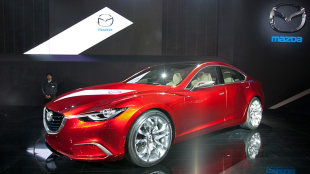
Mazda Takeri previews its next midsize sedan
Still getting over its breakup with Ford, Mazda revealed a concept that’s likely a close read of its upcoming makeover for the Mazda6 sedan — even if the efficient diesel engine won't make it to America at first.
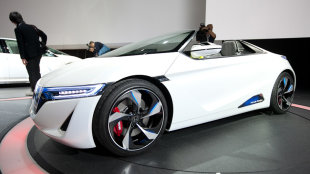
Honda EV-STER rethinks the electric roadster
Honda has the most ground to regain among Japanese automakers, and laid out plans for new hybrids, electric-powered AWD systems and even cars that can drive themselves on freeways. Two-seat electric runabouts won’t pop up on every street corner anytime soon, but the design of these Honda concepts might hit the road in a few years.
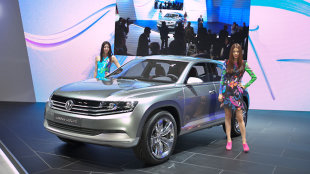
Volkswagen Cross Coupe spells SUV
The only non-Japanese automaker to make a major introduction in Tokyo, this Volkswagen concept previews the look its SUVs will wear.
The only non-Japanese automaker to make a major introduction in Tokyo, this Volkswagen concept previews the look its SUVs will wear.
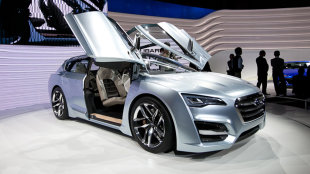
Subaru slips a peek at next-generation Legacy
The largest supplier of all-wheel-drive station wagons shows what a 21st-century version will look like — except for the ridiculous doors. It also showed the Subaru BRZ in road-going and racing form.
